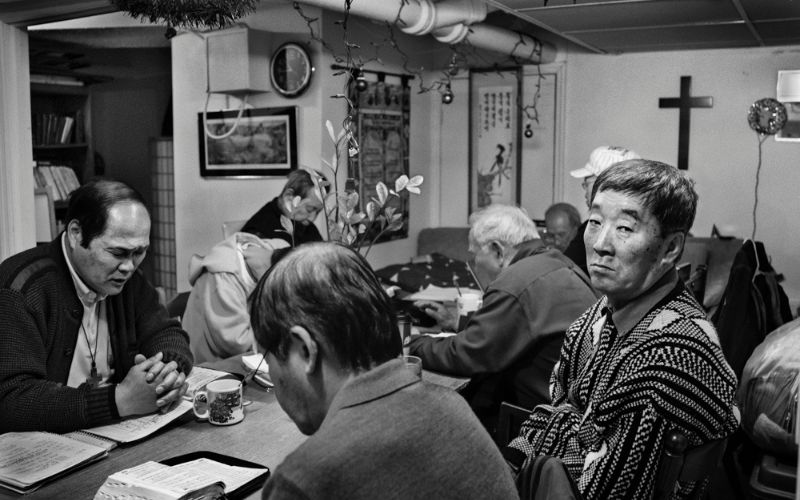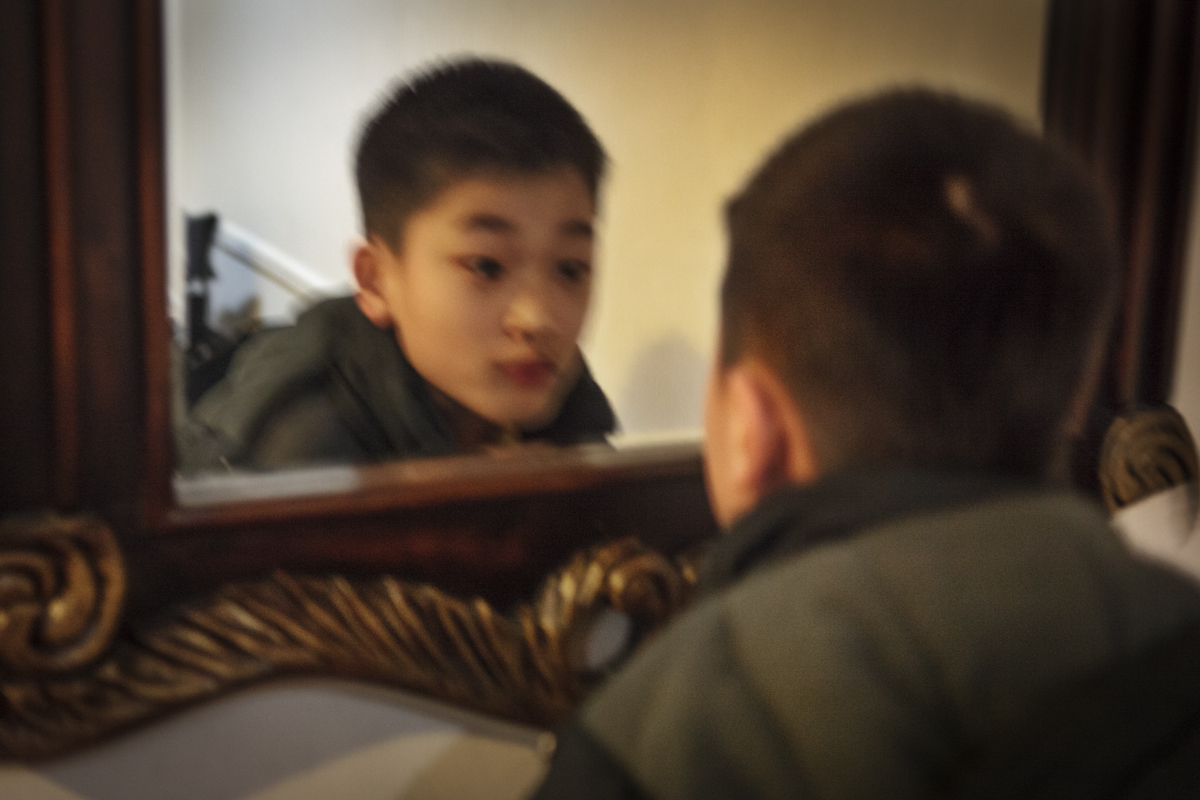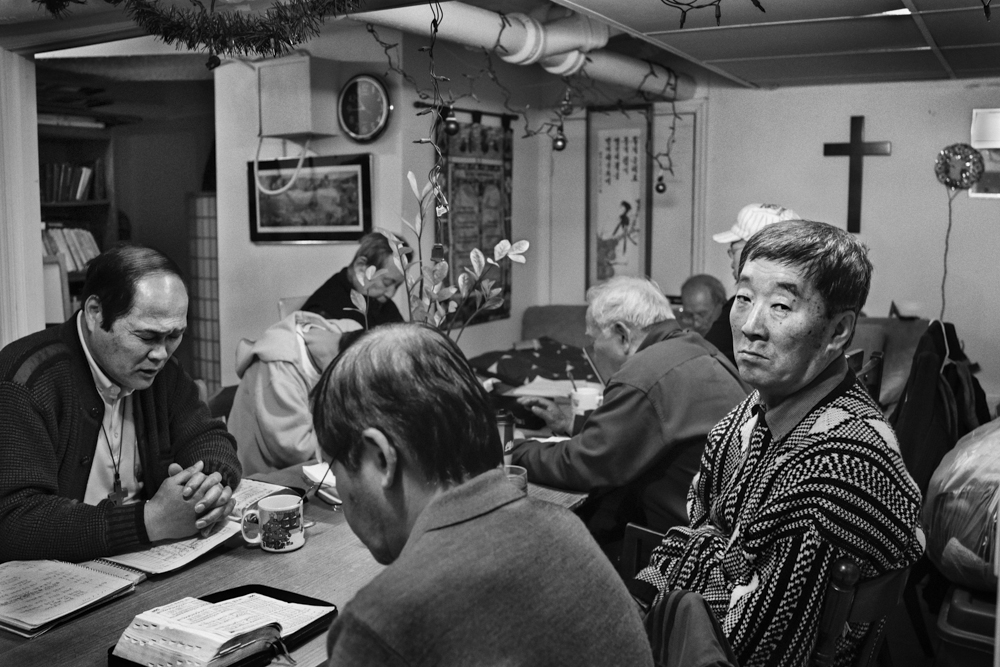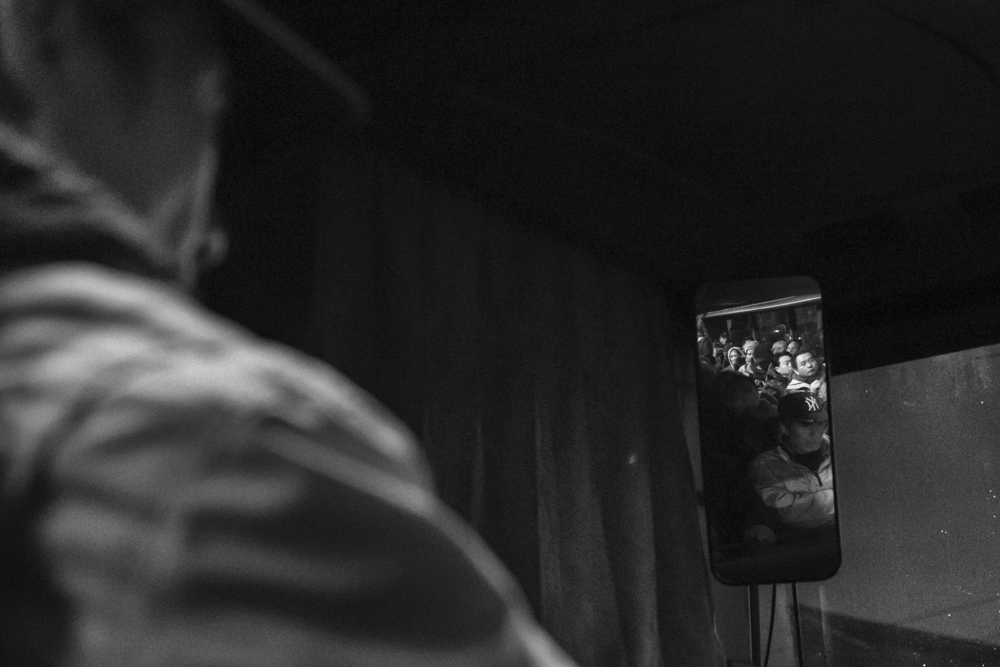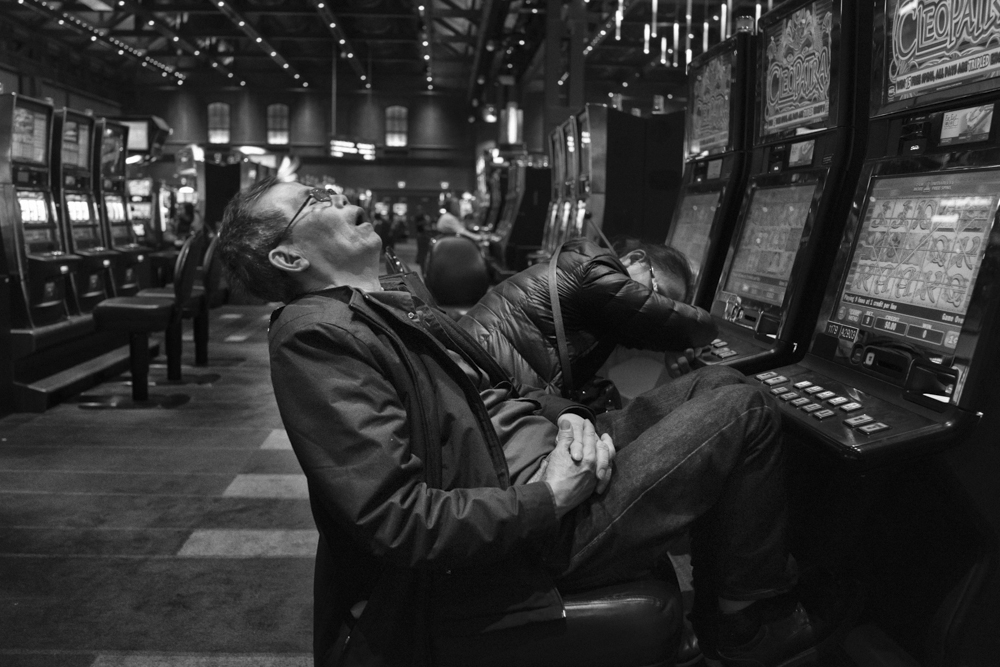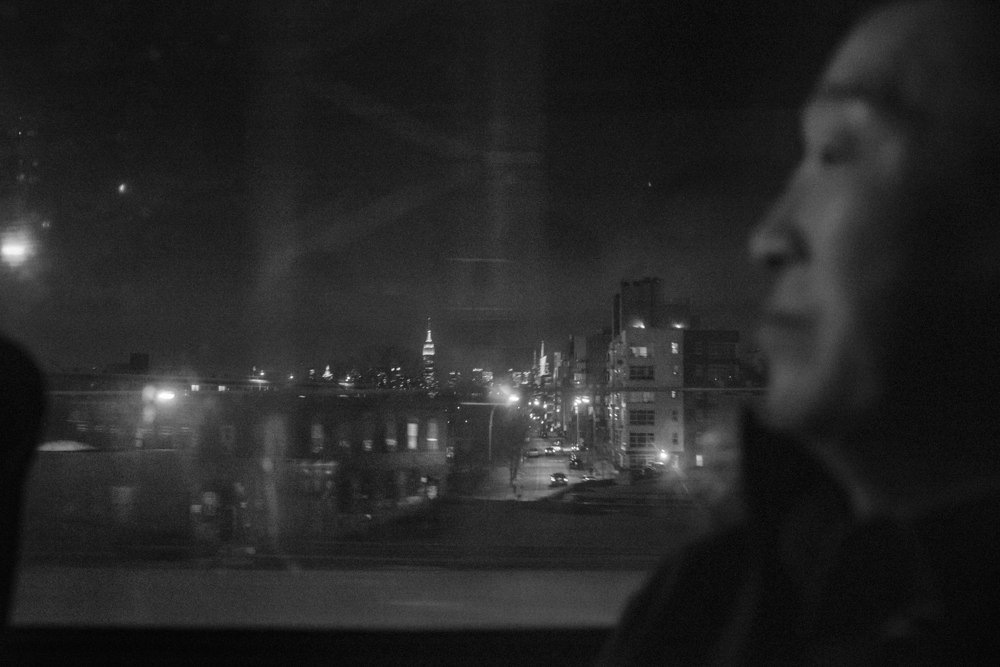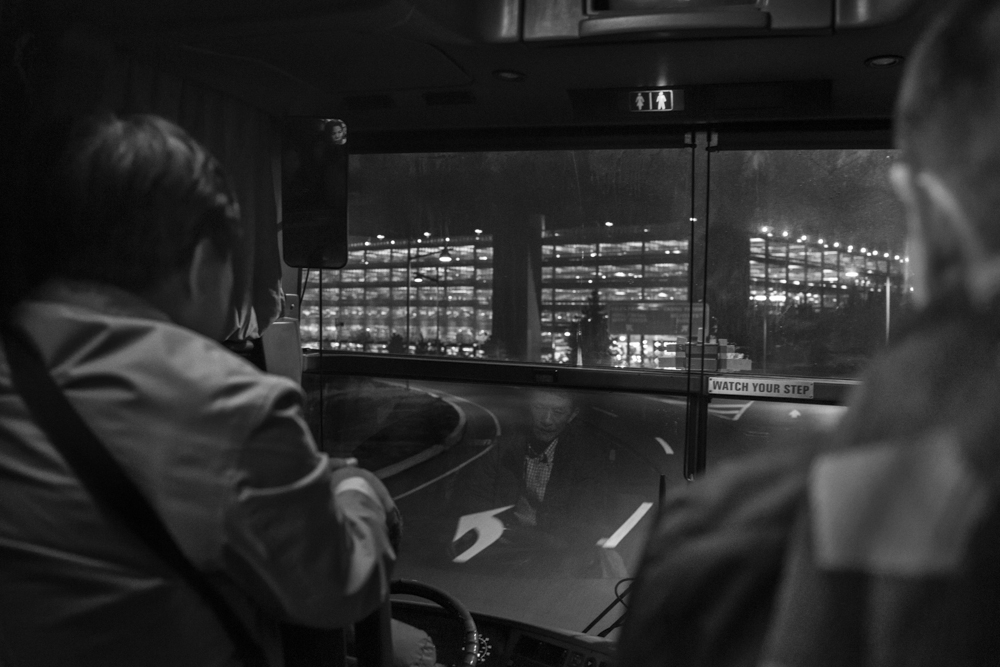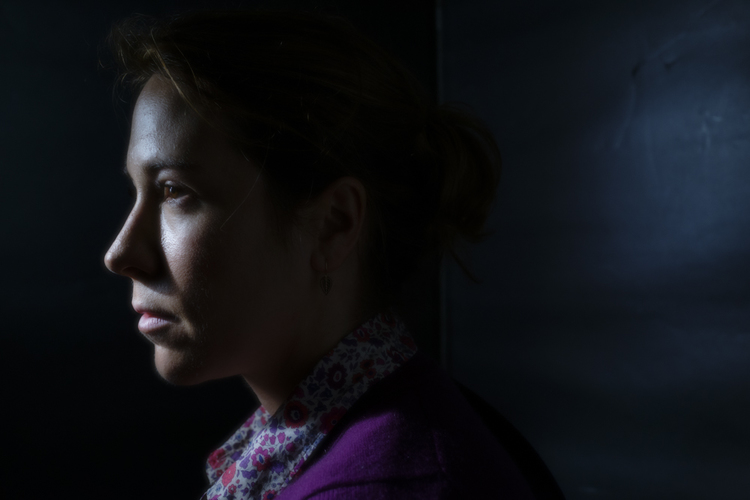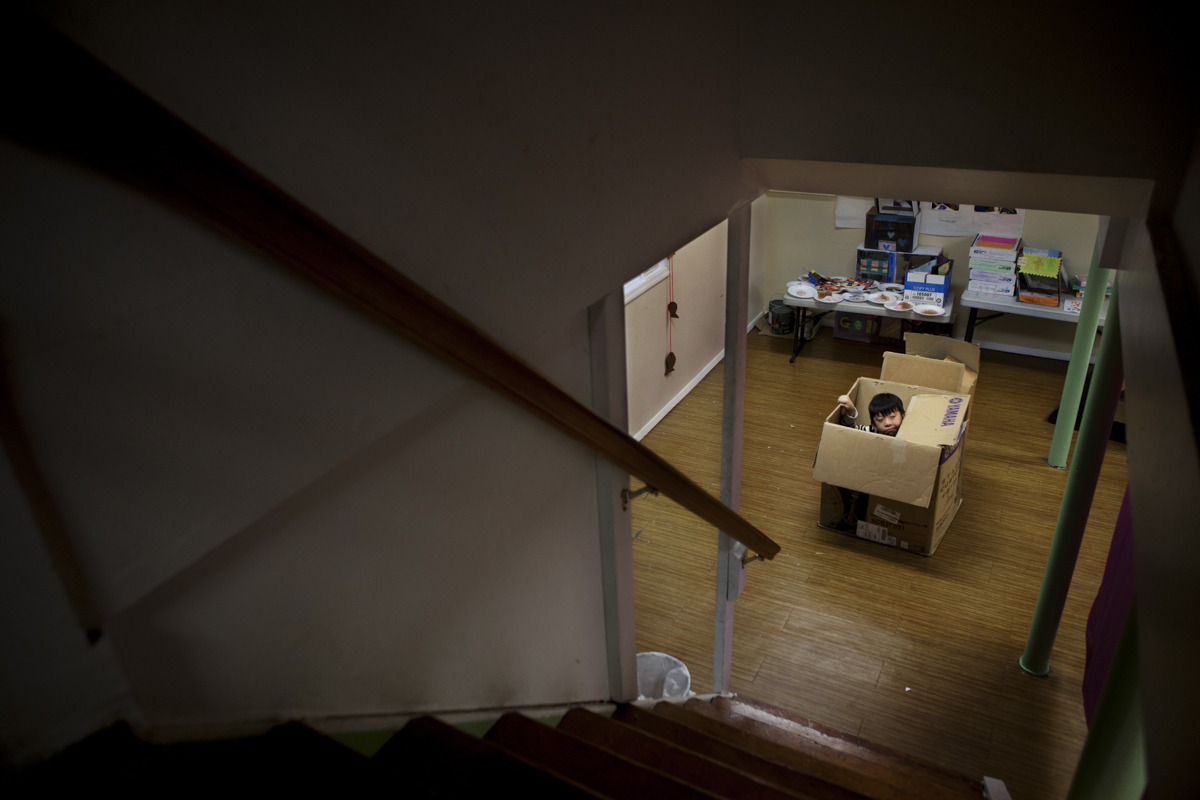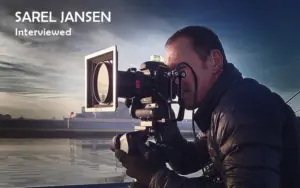For one day a week, every week, for over six months, photojournalist Yeong-ung Yang would take a bus ride from a station in Queens, New York to a casino far off in Pennsylvania. The ride was round trip and lasted all night. And, frankly, he shouldn’t have been there. He was lucky even to get tickets. You see this bus ride was actually a shuttle provided by the casino and, more critically, served as a means of survival for the “Bus-kkun” of New York.
Korean slang for any homeless person who rides this shuttle more than twice a day, the Bus-kkun make a living selling free game vouchers handed during the ride. Usually these men and women have health problems and are new to America. Yang was drawn to their stories because he felt nobody else cared. They were on the fringes of society and essentially unseen. But this project as well as his others are about illuminating the unique stories everyone has to tell. Showing — by sheer heart — how good documentary photography should be done.
In this interview, Yang talks about his respectful approach to documentary projects, explains how he got his start, and reveals why he’s drawn to documenting the fringes of society.
You’ve been featured by the New York Times and have won several awards for your photojournalism. How did you get your start? How would you describe your photographic style?
I began my career in journalism as a videographer in the Public Affairs Office of the Korean Army, Zaytun Division, located in Arbil, Iraq, in 2006 for 7 months. I worked for New York Korea Daily from 2010 to 2012 as a writer and a photographer and have since documented Korean Americans based in New York. I recently graduated from the Photojournalism/Documentary Photography Program at the International Center of Photography in New York City. Honestly, I don’t think I have a specific style that I want to push throughout my whole career. The style depends on the story and the subject matter, and it’s not defined before shooting.
What drew you to documentary photography? Where does your documentarian impulse come from?
An individual’s story drives me to producing documentary projects. Everybody I’ve met during my journalism career has had incredible stories. I believe photography is a productive tool to construct a person’s life into story. Even when the story generates from an universal social issue, individualizing it is always more compelling, since characters are the most essential components to delivering a story.
Your personal projects illuminate issues related to Asian immigrants. What was your process to researching your subject before shooting?
Through my experience as a reporter for a local Korean newspaper, covering crime scenes and social issues in New York, I’ve met these people and wrote articles about unemployed middle aged Koreans who began to sleep in local churches. During the interviews with some of the homeless, I figured out that they were riding casino buses regularly without a job. I had failed to see this. I assumed they were gamblers. I knew I had to cover this issue. It’s not just because it was people of my nationality, it’s because they were on the fringes of society where no one actually cares about. Despite some articles in the past describing this group of people indirectly, I thought their stories needed an emotional face to let the viewers understand the experience. Feeling a great responsibility to document and having a curiosity of the unseen world, I decided to dig into places that require personal involvement to reach the right level of understanding. There weren’t any resources from government agencies or a relatively in-depth reference from other media outlets to research. So I began meeting wanderers from the streets and the ministers who provided temporary shelter to the homeless riding casino buses as a lifeline. I didn’t hesitate to speak with whomever I was introduced to. This gave me ideas about the ‘endless commute to casinos’.
What was your approach gaining their trust, their respect? How involved were you in entering their space?
Some recognized me as reporter and I took advantage of the credibility that I had already made. But mainly I convinced the bus riders that I wanted to experience for myself what it is like to live as a regular ‘Bus-kkun’, which is an informal Korean term that means a group of people who ride casino buses regularly as means of survival. It was difficult to reserve or buy a bus ticket to the casinos because the Chinese bus company’s staff, who usually hang around Chinese bakery stores in Flushing, Queens, do not sell tickets to random people unless you are a regular ‘Bus-kkun’. However, I managed to gain trust with one particular subject who helped me board a bus.
I took the same overnight round trip bus to the casino, the same day every week, for over six months. I wanted to let them know I was an attentive listener to whatever they were going to say, rather than a rude stringer who shows up and disappears with snapshots. I learned how to get bored, waiting for the moment. During the whole time in the casino while waiting approximately 5 hours for the scheduled bus to go back home, I would hang around with them and listened without judging them. I often brought back pictures of them and me inside the frame. Since some of the people didn’t even know their real names and only recognized themselves by seat number or last name, some didn’t talk to me and preferred to mind their own business. And there was a person who had negative feelings about my reportage and eventually came to me after 3 months to give his observations. But mostly everyone I met had an incredible history, a unique story. Many of them actually wanted their stories to be told. By engaging with them one by one helped me to be seen as a consistent storyteller.
Bus-Kkun has some really great compositions. Could you explain your process to achieving meaningful images that are still visually striking?
As I took the bus once or more every week, I thoroughly edited and sequenced the photos as soon as I came back. It was a challenge to illustrate the details of their routine and deliver the harsh experience that the people had to handle. But through the constant overview of the pictures and a checking of what kind of image was missing, based on the actual experience, helped to pre-visualize the next shoot. I believe the content of the pictures speaks more than I do, so I tried to find the right way to deliver it.
The fifth image in that project is one of my favorites. How did you know to shoot at this exact moment?
Since I had restrictions and was cautious not to alert people with my camera, pre-visualization was essential. I usually observed people’s flow and noted how they spend their time before they would go back to the bus. Not only did I pre-visualize, but also I planned everything I did during the trip, even in the long term. (Sorry I can’t reveal how I actually managed to avoid being noticed by the security officers. It could interrupt my next photo shoot.)
What is the greatest advice you ever received about making a career in photography?
“Whether you succeed or not as a photojournalist, or any kind of a photographer, enjoy photography for the rest of your life.” That was the final graduation advice from my mentor, Alison Morley, chair of Documentary/Photojournalism program in ICP. Whether it’s an assignment, commercial work on the side, or just a meaningful documentary project, photography is about connecting my personality and the subject. A compelling story might come from the subject itself, but it all works out when I embrace the opportunity to use my camera to engage with the subject.
Be sure to check out all of Yeong’s work on his website and blog.
